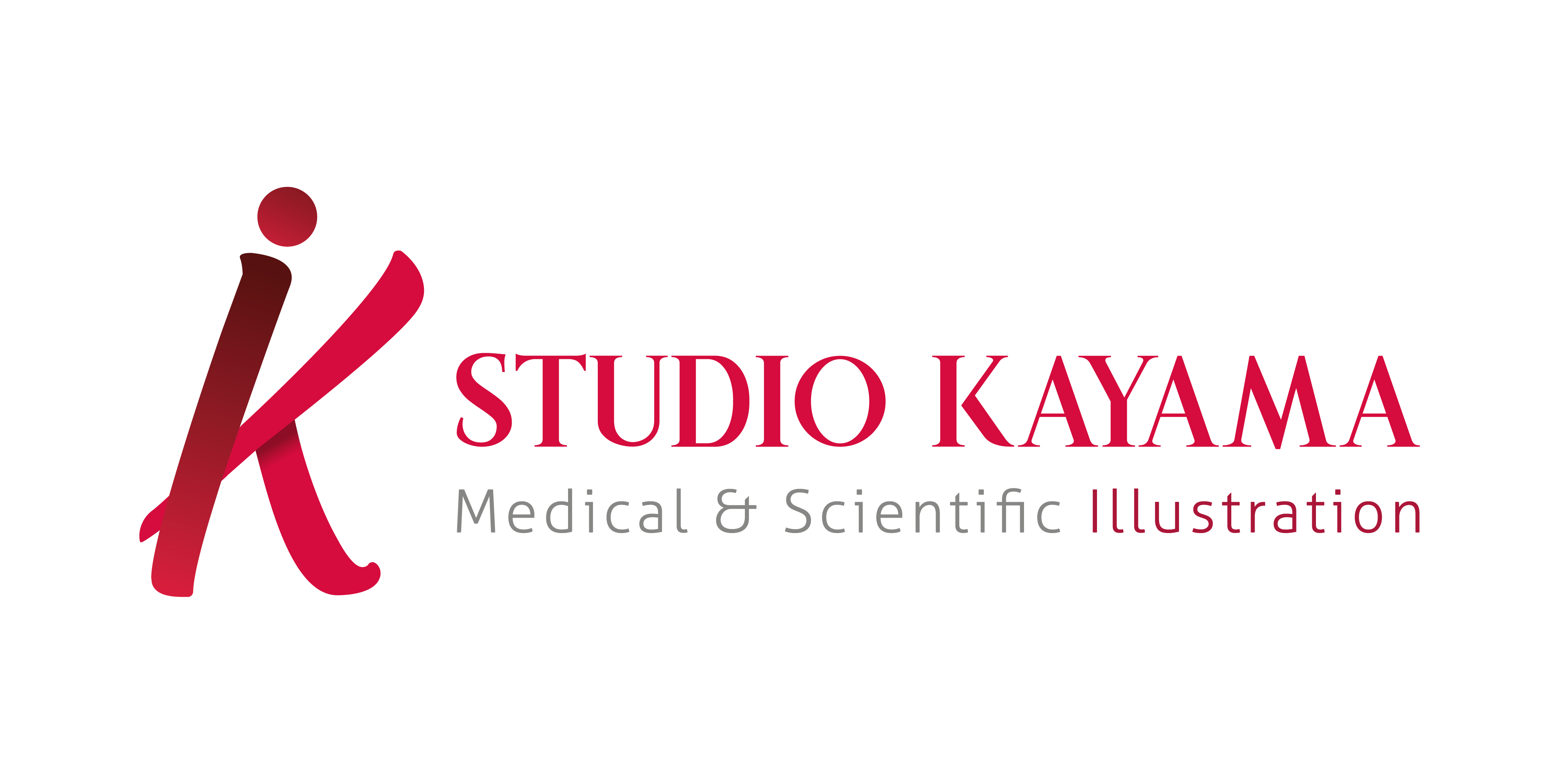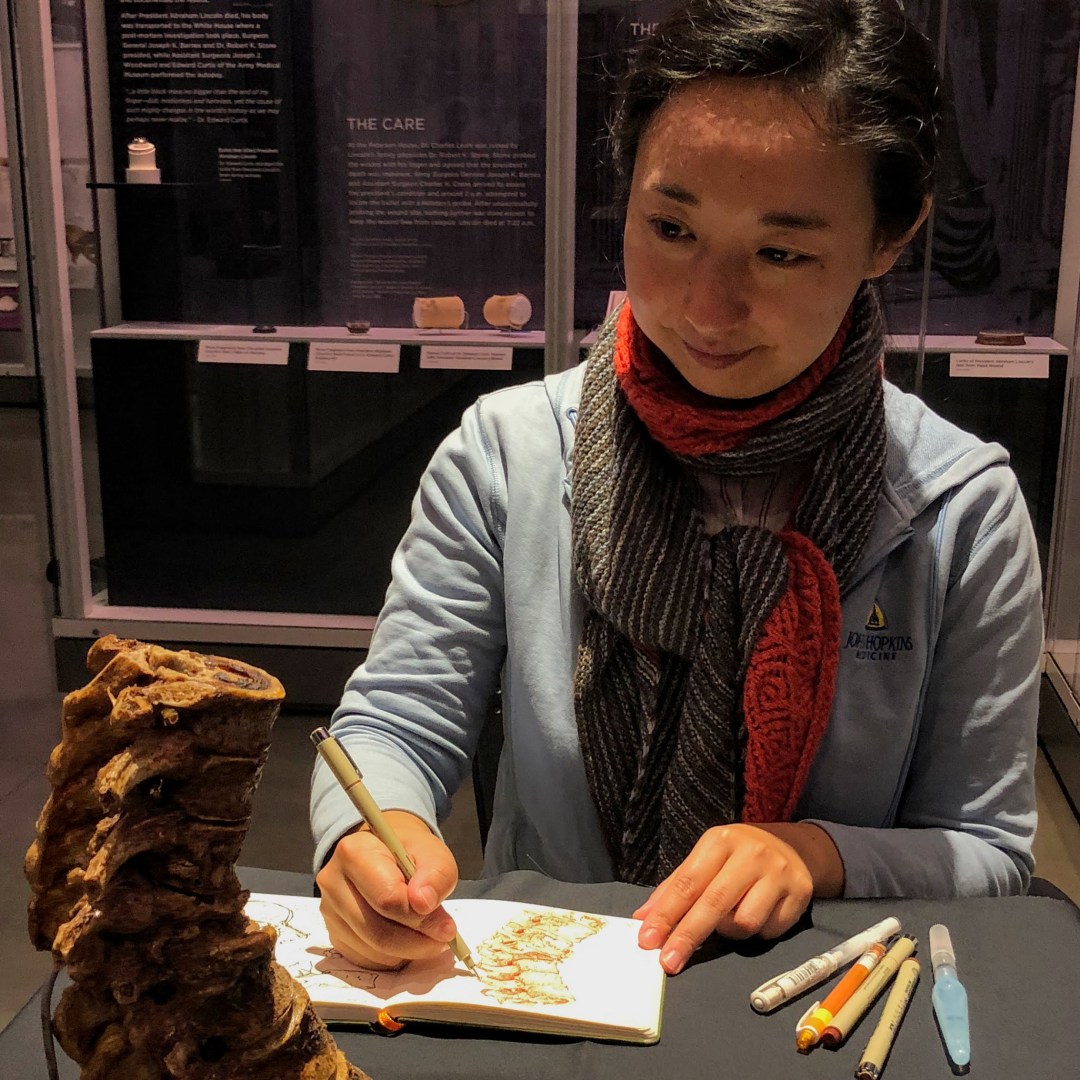Get to know Studio Kayama
About Us
For over 10 years, Studio Kayama has been creating original medical and scientific illustrations for textbooks, journals, magazines, federal and local organizations, non-profits, aquariums, parks, and more. Our method, approach, and techniques have gained popularity that we are often invited to lead workshops, seminars, and lectures.
Working with an illustrator is easier than it seems! Check out a few case studies and the general workflow.
Natural Science
Surgical
Anatomical
Cellular & Molecular
Hello! I’m Ikumi Kayama
Checking out natural history specimens under a microscope at a museum and stepping into the OR to do surgical sketches make my heart flutter. Always with a pencil in hand, I love to draw what I see and think about what needs to be shared so everyone gets to see all the fascinating stuff that’s usually hard to see. I just love being the first to illustrate a new species or a new approach to surgery. When I’m not drawing, I’m running around counting birds, spinning/knitting/weaving wool, and growing native plants from seed…oh, but I also draw birds, sheep, and plants.
I was born in Japan and lived there until I was seven years old. I remember when Dad first mentioned us going to America. Knowing very little about any foreign country, I was very excited about this adventure. (click to keep reading...)
Fast forward a few months, and it was the first day of school in the suburbs of Atlanta. The cultural and language barrier was overwhelming. I couldn’t communicate with my classmates or the teacher at all. One day, I realized that drawings are a way to connect. I always loved to draw, especially small animals. With drawings, I didn’t have to worry about correct grammar or pronunciation. I could show entire stories and abstract ideas like emotions. My classmates began to notice my drawings, and I began to make friends. Slowly I began to talk more in English.
My language barrier mostly disappeared by the time I started middle school, but it was still hard to express some things. I’ll never forget how I felt when I was at the doctor’s office. I had asthma when I was a kid, and I got sick a lot. “So tell me, what sort of pain do you have in your head? Your throat? How is your breathing?” The pediatrician would ask. “I don’t know,” I would reply and look at Mom. It was the technical jargon and anatomical terms that really kept us from communicating with the doctor.
I always found that frustrating and felt very guilty because my sister was always healthy. I was the sick one who made my parents go through seemingly unnecessary troubles. It was embarrassing watching my parents struggle for me. That feeling of guilt and embarrassment stayed with me.
Few years later, in my 9th grade biology class, Ms. Byers assigned an activity to look under a microscope to identify some cells. “Okay guys, we’re looking for the nerve cells in the slide”. At first we excitedly looked for the cells as we adjusted various knobs. After a while, more students including myself were frustrated because we weren’t seeing what we’re supposed to. Ms. Byers walked over to a microscope and started to focus and position the slide. “See here…I’m putting the pointer right in the middle…there. Here you go”. My classmate looked in, looked up with a puzzled expression and prompted me to look. What I saw were blurry pink/purple blobs with thin pink lines going all over the place. “This does NOT look like what it’s supposed to look like.” Ms. Byers brought the textbook and pointed at the photo of a slide next to an illustration of nerve cells. In the textbook, the slide looked somewhat similar to what we had. However, the major improvement was the illustration placed beside the photo. The illustration made the outlines so much more clear and the structures easier to see. The illustration even had labels for different structures. “Ms. Byers, why doesn’t the slide look like the illustration?” I asked. “They never do,” she answered with a little smile on her face. “You’ll never see a slide that’s ideal or perfect.” At first I was a bit put out by her comment, but that was the first time I realized that illustrations are more powerful than photographs. Illustrations are never blurry or mis-shapen. Illustrations can filter information so that it shows only what you need to see to learn from them.
I got into college, majoring in scientific illustration. My original thought was to be a Disney animator, but the studios had just made the shift to digital 3D animation. At the time, I wanted to tell a story through hand-drawn pictures, not slick 3D models.
One day I was talking this out with my adviser as we discussed what classes I should take next semester. Staring into the computer screen Gene asked, “So have you considered medical illustration?” I had never heard of such a thing. “Medical illustrators make visuals that help other people communicate in the medical and health care setting. I think you’ll be really good at it.” At first I was only a little bit interested–then the memory from the pediatrician’s office popped into my mind.
Medical illustrations connect doctors and patients. Medical illustrations can teach surgeons how to do surgery. The thought of helping people through my art and science skills made me so happy from the bottom of my heart. This was a huge aha moment for me! I had to do it.
They say “To teach is to learn twice.” I learned that “to Illustrate is to learn at least three times” because not only did I have to learn enough to teach something, I also had to show exactly what something looked like and what features were important to understand. Many illustrations are used by teachers to teach and train others. In a way, my work teaches the teachers.
And now, I help researchers, doctors, and educators communicate ideas and findings effectively through use of accurate visuals. I’ve taken many science courses in college and grad school, and attended numerous scientific conferences. I have drawn insects and cells by looking under a microscope. I took anatomy with medical students and sketched from the dissections. I went to OR and sketched the surgical procedures. Some of my recent work includes a cancer education pamphlet for newly diagnosed patients and surgical textbooks on neurosurgery.
So, I’m here to tell you that using visuals has helped me break the ice and form an instant connection with someone who came from a different background and language. Visuals can connect people and can be used as a powerful communication tool. We all have a voice that no one can take away. The voice does not have to be a one that’s heard. For me, my voice is the one that could be seen.
contact
My Story and Skills
I have classical training in medical and scientific illustration from Johns Hopkins University School of Medicine and the University of Georgia respectively. Combining my understanding in medicine/sciences and art, I’m able to understand the subject matter and ask the right questions to create images that are catered to the appropriate target audience. Being trained in the “in-between” period, I’m proficient in both digital and traditional techniques to capture the right feel for attractive and memorable visuals.
Literature Research & Review
Communicating with experts and educators to Filter the information for the Appropriate Audience
Sketching concept/layouts for best communication practices
Classical and Digital Art Creation Tools and Techniques
Experience
Artist in Residency
Denver Botanic Gardens
2015
Medical Animator
Cosmocyte, Savage, MD
2011-12
Visiting Scientific Illustrator
Department of Paleontology, American Museum of Natural History, New York, NY
2008
Education
MA, Medical and Biological Illustration
Johns Hopkins University School of Medicine
May 2008
BFA, Interdisciplinary Studies, Scientific Illustrations
University of Georgia – May 2005
Minor, French
Magna Cum Laude
GPA: 3.95/4.00
Awards & Recognition
Distinguished Service Award
Guild of Natural Science Illustrators, 2019
Invited Artist
James Webb Space Telescope Art Event, NASA Goddard Space Flight Center, Greenbelt, MD, 2016
Educational Grant
Maryland Ornithological Society/National Audubon Society, 2018
Years of experience
Different Human Bones Illustrated
Completed Full Marathons
Pen/Brush strokes per illustration
Portfolio
Recent Work
The best part of my work is my huge variety of clients and experts and getting to create unique illustrations. Let me know what you think!

Birdbanding Black Bellied Whistling Duck
Animals & The World Around Us

Microvascularture Anastomosis
The Bulding Blocks of Life

Human bones of the lower limb
The Human Body

Pregnancy & covid
Procedures & Illustrations

